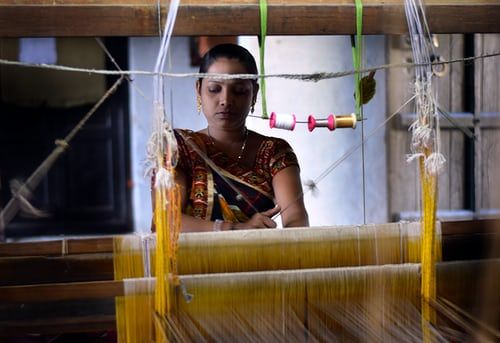On August 7 in 1905, the Swadeshi movement was launched in India, under the guidance of Mahatma Gandhi. Curbing on foreign goods and relying on domestic production was the movement’s objective. National Handloom Day is celebrated annually on the same day to raise awareness about India’s indigenous handloom industry and its contribution to socio-economic development.
It is believed that the father of the nation felt weaving on handlooms not only stood as a metaphor of swadeshi but also kept gloom and despair at bay.
Also read: How the Indian design industry ‘wove’ magic with handloom, a vision of Mahatma Gandhi
According to reports, more than 70% of handloom weavers and women, hence the day is key to women empowerment.
The handloom sector depicts the nation’s glorious cultural heritage and is also an important source of livelihood for people in the country. National Handloom Day gives the opportunity for the weavers to experience recognition and appreciation.
History and significance
Started in 2015 by Prime Minister Narendra Modi at the Centenary Hall of Madras University, Chennai, the day’s objective was to create awareness about handlooms in India. This year we observe the 7th National Handloom Day.
Also read: A lesson designer Rahul Mishra learned from his 4-year-old
The day honours the largest unorganized economic activities – the Handloom sector. It is an opportunity for people to talk about the relevance and importance of handlooms and swadeshi. The occasion attempts at acknowledging the contribution of weavers and further protect heritage and empower them.
While Delhi is hosting this year’s function, events have been organised in Varanasi, Guwahati, Jaipur and Bhubaneswar in the last few years. On Friday, the Ministry of Textile said that the government is taking measures to ensure sustainable development of the handloom sector, empowering handloom weavers and workers financially, and instilling pride in their exquisite craftsmanship







